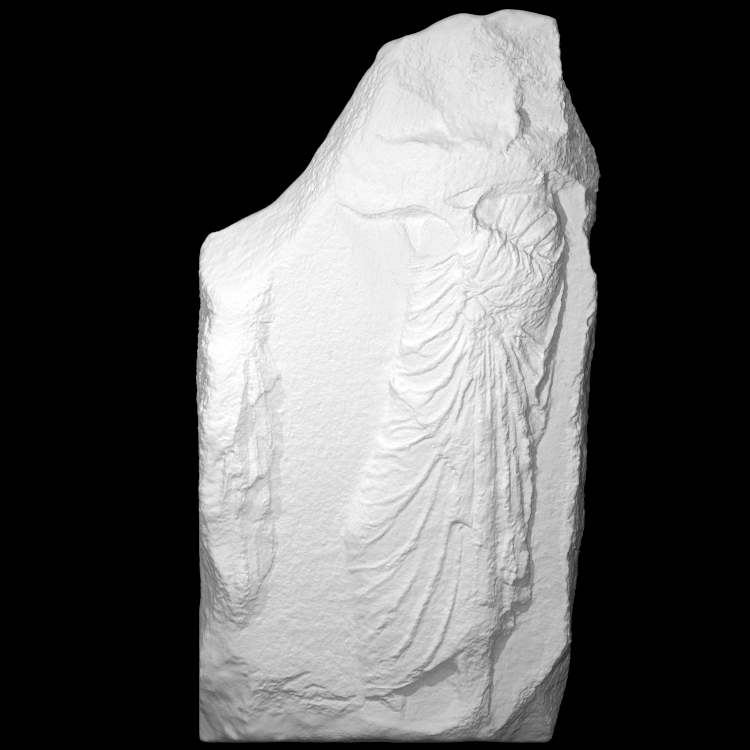
Parthenon Frieze _ North V, 13
myminifactory
Three figures carrying trays of offerings were originally depicted. These tray-bearers were said to be drawn from the ranks of foreign craftsmen who had come to Athens to work. A drawing by Jacques Carrey done around 1674 shows the group as they appeared before the explosion in 1687. Tray-bearers, or skaphephoros, are non-citizen residents in Athens, known as metics, who carry trays filled with honeycombs and cakes in processions. The North frieze is divided between the British Museum and the Acropolis museum. The total length of the north frieze is 58.70 meters. Scenes begin at the northwest corner of the opisthonaos as a continuation of the procession already started on the west side, running from block N XLVII to block N I. Action develops gradually, accelerating from quiet preparation to a gallop. Horsemen are depicted proceeding in groups of seven or eight, with horses partly overlapping each other. The continuous flow of horses and riders is interrupted only by the marshal on block XXXIV. With variety of garment, stance, and gesture among the horsemen, as well as occasional depictions of men turning their heads to look back, monotony is avoided. The Parthenon frieze forms a continuous band with scenes in low relief that encircles the upper part of the cella within the outer colonnade. The theme represented is the procession toward the Acropolis during the Great Panathenaia, commemorating the birthday of goddess Athena. Numbering from I. Jenkins' The Parthenon Frieze, 1994, with frieze slabs marked in Roman numerals and people in Arabic numerals.
With this file you will be able to print Parthenon Frieze _ North V, 13 with your 3D printer. Click on the button and save the file on your computer to work, edit or customize your design. You can also find more 3D designs for printers on Parthenon Frieze _ North V, 13.
